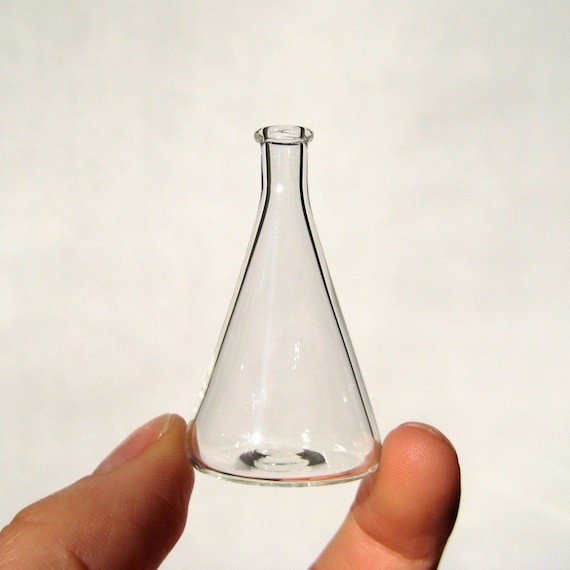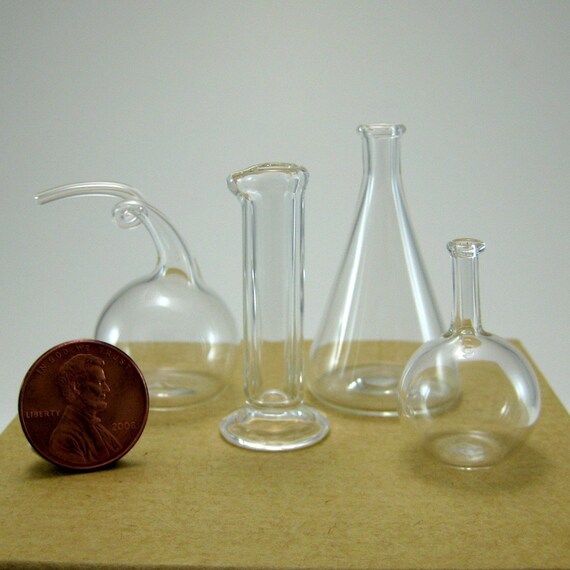Thursday, November 25, 2010
Chem 20 - Qualitative Analysis
Here is an academic research article on pesticides in drinking water in Alberta.
A short description of liquid chromatography can be found here and another for atomic absorption spectroscopy can be found here.
Tuesday, November 23, 2010
Thursday, November 18, 2010
New Website Tracks Local Pollutions

Read more: http://www.edmontonjournal.com/Website+tracks+local+pollution+levels/3811349/story.html#ixzz15gxpsHXb
Earthquake warps train tracks
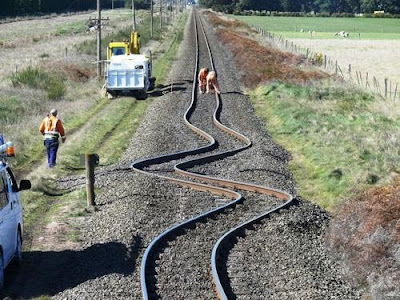 An earthquake in New Zealand caused this deformation of the train tracks.
An earthquake in New Zealand caused this deformation of the train tracks.Dave Petley, blogging at the American Geophysical Union, isn't exactly sure what caused the strange deformations, but speculates that "The compression on the very strong railway line was accommodated when a weak point was found, leading to a comparatively rapid deformation to form the main buckle on the left. This then concentrated stress on both sides of the buckle, allowing the other (right side) bends to form."
Eco-City 2020: Domed City Planned for Siberia

A Russian company has unveiled plans to build a gigantic domed city in an abandoned diamond mine in Siberia.
The city, named Eco-city 2020, would be constructed inside the Mir diamond mine, the second largest excavated hole on the planet. It's a quarter-mile wide at the top and over 1,700 feet deep, which is so big that air flowing into the hole can actually suck helicopters out of the sky. If the project gets going, the mine would be completely covered over with a glass dome to protect the city from the weather in Siberia (which is apparently lousy almost all the time), and solar cells embedded in the dome would provide power for the entire structure.
Eco-city would be constructed of multiple levels, with a huge central core. The main floor would hold parks and recreation areas, with residential areas terracing up around the walls of the mine. Underneath would be space for vertical farms and forests, subsiding on light piped down the central core. An estimated 100,000 people would be able to live in Eco-city, and architects are hoping that it would help to attract tourists to Eastern Siberia. Um, good luck with that.
More pictures.Tuesday, November 9, 2010
Mixing and Unmixing Colours in Fluids
Sunday, November 7, 2010
Science 10 Physics Engine Technology Links
Some links to see pictures and animations of these early machines. More information is provided in your textbooks.
Engines from the first chart:
Gunpowder:
http://science.howstuffworks.com/revolver1.htm
Heat Engine:
http://www.animatedengines.com/vstirling.shtml
Savery Pump Engine:
http://library.thinkquest.org/C006011/english/jsites/steam_thomas_savery.php3?v=2
Newcomen Engine:
http://library.thinkquest.org/C006011/english/jsites/steam_thomas_newcomen.php3?v=2
Watt:
http://library.thinkquest.org/C006011/english/sites/steam_james_watt.php3?f=2&b=50&j=1&fl=1&v=2
Internal Combustion Engine:
http://www.howstuffworks.com/engine1.htm
Otto Engine:
http://www.animatedengines.com/otto.shtml
Machines from the second chart:
Hero Steam Engine
http://library.thinkquest.org/C006011/english/sites/steam_first_experiments.php3?v=2
Archimedes Screw
http://www.es.flinders.edu.au/~mattom/science+society/lectures/illustrations/lecture10/screw.html
Persian Water Wheel
http://beaversmill.ieasysite.com/water_wheel_004.htm
Reciprocating Pump
http://www.rpi.edu/dept/chem-eng/Biotech-Environ/PUMPS/reciprocating.html
Science 10 Physics - Terms to Know!
The following are scientists that are important to know. Look up each scientist and state their largest contribution to energy or thermodynamics.
Joule
Lavoisier
Volta
Becquerel
Edison
Oersted
Black
Leibniz
It is important for you to be able to differentiate between these forms of energy. State the definition of each:
Solar Energy
Kinetic Energy
Chemical Energy
Electrical Energy
Mechanical Energy
Nuclear Energy
Potential Energy
HeatThursday, November 4, 2010
Mini Chem Glassware
Sinking Boat but Actually Seaworthy


Julien Berthier is an artist, who created this sculpture that is actually seaworthy. He toured around Europe in his boat. His website is:http://www.julienberthier.org/Love-love.html
Tuesday, November 2, 2010
Every Drop Counts!

Calculate your water footprint.
http://environment.nationalgeographic.com/environment/freshwater/water-footprint-calculator/
What may come as a surprise is that very little of that—only five percent—runs through toilets, taps, and garden hoses at home. Nearly 95 percent of your water footprint is hidden in the food you eat, energy you use, products you buy, and services you rely on.
What can you do to conserve water?
- If you’re in the market for a toilet, buy a low-volume, ultra low-volume, or dual-flush model.
- Fix leaky faucets. All those wasted drops add up—sometimes to 10-25 gallons a day.
- Run your dishwasher and washing machine only when full. When it’s time to replace them, buy a water- and energy-efficient model. Remember, saving water saves energy, and saving energy saves water.
- Buy less stuff. Everything takes water to make. So if we buy less, we shrink our water footprint.
- Recycle plastics, glass, metals, and paper. Buy re-usable products rather than throw-aways, as it takes water to make most everything.
- Turn off the tap while brushing your teeth and washing the dishes. Shave a minute or two off your shower time. Millions of people doing even the little things makes a difference.
- Know the source of your drinking water—the river, lake, or aquifer that supplies your home. Once you know it, you’ll care about it. You just won’t want to waste water.
Monday, November 1, 2010
Science 10 Physics Generator Links
How a hydroelectric generator works:
http://science.howstuffworks.com/environmental/energy/hydropower-plant1.htm
http://ga.water.usgs.gov/edu/hyhowworks.html
How a coal-burning power station works:
http://www.energyfutures.qld.gov.au/how_a_coal_fired_power_station_works.cfm
http://www.hk-phy.org/energy/power/elect_phy/flash/powerplant_icon1.swf
How a nuclear power station works:
http://a-agung.staff.ugm.ac.id/wp-content/nuctour1.swf
http://science.howstuffworks.com/nuclear-power3.htm
How a solar cell works:
http://www.odec.ca/projects/2006/wong6j2/solarAnimation.html
http://simeonintl.com/files/A_flash_demo_how_solar_panel_works.swf
Colour Chemistry Crayons
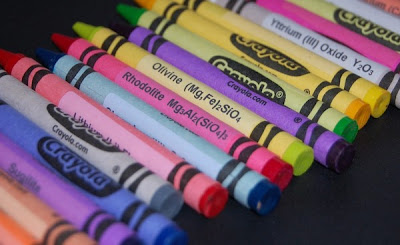
These crayons are labeled with the names of the chemical compounds that produce the colour. Genius!
http://blog.makezine.com/archive/2010/08/color_chemistry_crayons.html
The Elements - As Seen By the Internet
Unpopular Science - Human Life is Subject to the Universal Laws of Physics
 This explains why an empty refrigerator administrates a much smaller gravitational pull than, say, one thatʼs stacked with 50 pounds of delicious leftovers. Great: that means we can blame the leftovers.
This explains why an empty refrigerator administrates a much smaller gravitational pull than, say, one thatʼs stacked with 50 pounds of delicious leftovers. Great: that means we can blame the leftovers.Check out other pics and examples of physics in everyday life:
http://niemann.blogs.nytimes.com/2010/10/25/unpopular-science/
Virtual Neuron
 You can explore this neat virtual neuron: http://www.childrenshospital.org/research/_neuron/index.html
You can explore this neat virtual neuron: http://www.childrenshospital.org/research/_neuron/index.html
Cave of Crystals in Mexico
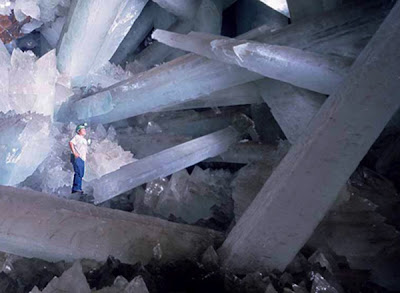
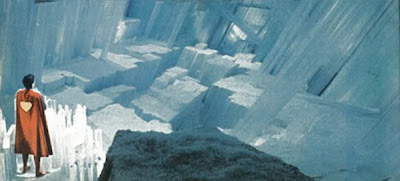
This is certainly old news to the geologists in our midst, but I couldn't believe my eyes watching this BBC video clip of Professor Iain Stewart exploring the amazing Cueva de los Cristales (Cave of Crystals) in Naica, Mexico. The cave is home to crystal beams as long as 36 feet long. Looks an awful lot like Superman's Fortress of Solitude!



